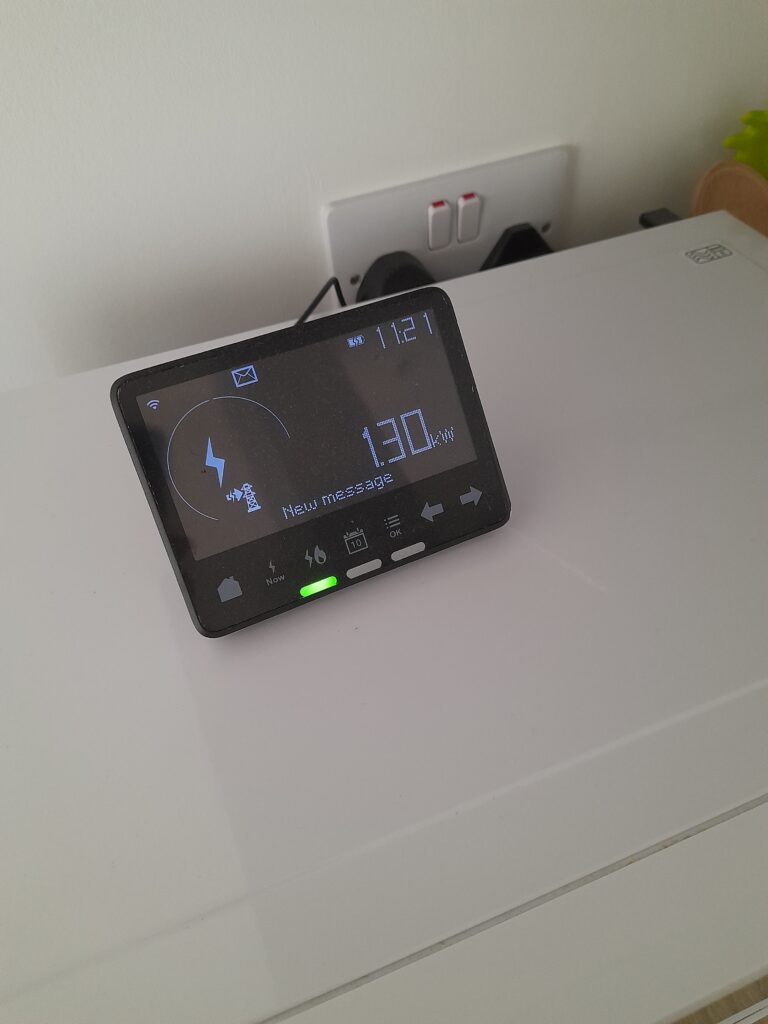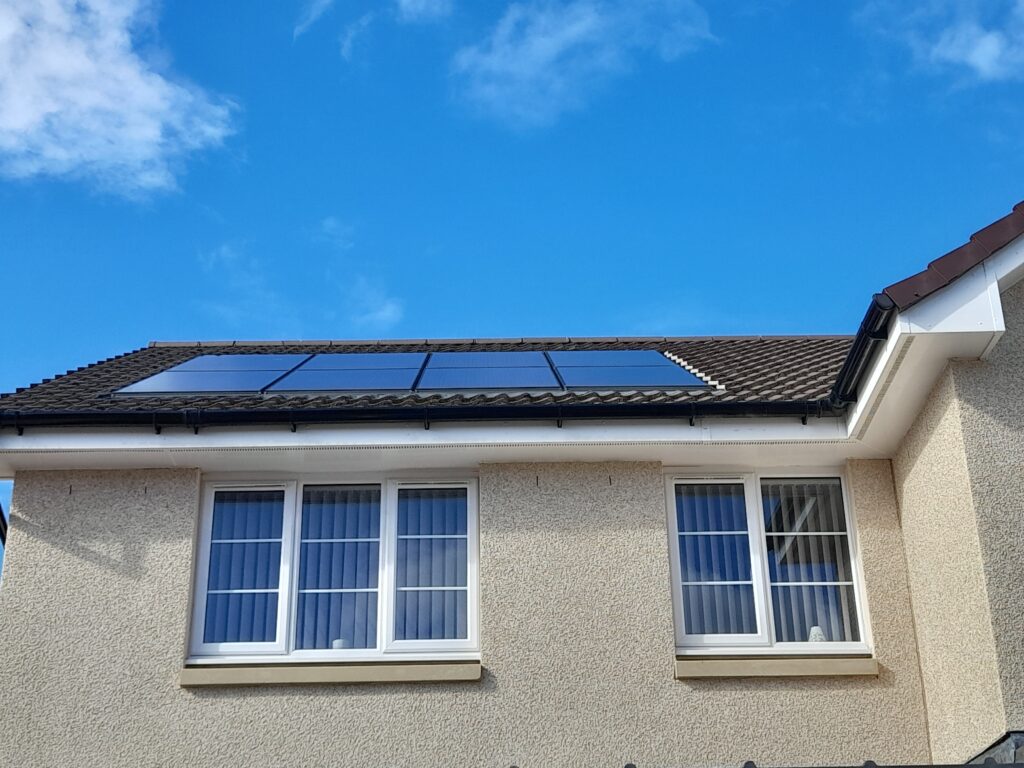The Present
The proliferation of new homes with solar panels in the United Kingdom is increasing awareness of their potential ability to reduce energy costs. There are some basic observations of these developments to note. One is that the optimum south facing configuration is not always available. For East facing panels peak sun will be mid morning while for west facing this will be sometime in mid afternoon. Underlying all of these configurations will be the peak solar capacity installed in each house. For a typical larger four bedroomed new house, this value is likely to be no more than around 2 kW and with lower capacities corresponding to smaller houses. Such installations typically utilise individual panels of 250 W peak generation. Such 2 kW installations would typically generate around 1500 kWh annually in the UK. It is a valid observation, however, to reflect on the rather modest array of solar panels currently installed on new build houses.
The role of solar power to assist in the domestic energy budget is made more obvious with the use of a smart meter which can indicate the net power drawn from or supplied to the grid. Without battery storage ‘spare’ power generated by the solar system is typically fed back to the grid. This will be without any financial reward to the homeowner unless they are signed up to an obliging energy supplier. With the recent demise of so many small to medium energy suppliers in the UK, however this has become increasingly unlikely. This prompts the homeowner to consider options for battery storage to increase the utilisation of locally captured solar power. While the cost of battery storage is still falling, modest storage capacity of 1 kWh still costs in the region of around £750 and with consideration of cost of replacement over a set time scale identified as a ‘hidden’ cost of their use.
An alternative approach is to select the power requirements of appliances that utilise electricity in order that a higher percentage of available solar generated electricity is utilised and the cost savings thus greater. One example would be an electric kettle which normally has a rating of 3 kW and where, for example, 1 kW of solar is available, then the solar contribution is only one third of the energy cost. If the kettle could be switched to 1 kW then the water would be heated by the solar contribution and the cost savings greater, though of course the kettle would take longer to boil. Perhaps a more relevant example is that of an immersion heater which typically is available to augment a gas boiler system and where the heating element in the hot water tank is typically set at 3 kW. For a tank of 140 litre capacity 1 kWh of energy would raise the average tank temperature by around 6 C. This would be achieved by operating the 3 kW heater for 20 minutes or using one hour of solar generated power at 1 kW. On sunny days April till September it is likely that a peak 2 kW solar installation could have available at least around 4 kWh to make a significant contribution towards domestic hot water heating. The reality is, however, that the control systems are not smart enough to exclusivity divert ‘spare’ solar capacity to the immersion heater system. The standard 3 kW standard immersion element is hard wired to the domestic mains supply. In this configuration if there was 1 kW available via solar, the remaining 2 kW would be chargeable at the applicable tariff. A compromise solution to utilisation of more available solar and less chargeable tariff power could be to have selectable 1 kW and 3 kW settings on the immersion heater, though this would involve the home owner checking regularly what setting was appropriate for the immersion heater. Recently it has been shown that heat energy can be stored in ‘tanks’ filled with sand – and where the temperature of such a heat store can be raised to 500 C. Such simple heat storage devices offer promise of cost effective heat storage.
It is also appropriate to consider how domestic appliances such as electric ovens could be made more ‘solar friendly’. A typical medium sized oven will have a typical power rating of 2 kW. During a typical heating period of 30 minutes, the initial 2 kW loading will bring the temperature up to the set temperature and then maintain the temperature by switching the heating element off and on as heat is lost from the oven and the set temperature restored by reactivating the heating element. It can be considered that the overall energy requirement of the oven could be reduced by reduction of its overall heat capacity and improvement in its insulation. In particular, it may be possible to when successfully operate the oven with a 1 kW rating once the initial set temperature has been achieved at the 2kW setting. What would be even better would be devices that could dynamically vary their utilisation of available solar power, based on data captured by the domestic energy meter. This would identify also a feature of the household energy meter – it should be able to readily communicate the level of excess power that can be transferred to either heat or battery storage systems.
The drive to utilise a greater percentage of available solar power is entirely natural. At the same time it is appropriate to recall that each kWh of energy thus made available to the grid has the potential to reduce carbon emissions. This value will be around 0.2 kg of carbon dioxide per 1 kWh and at any time this value is dependent on the exact mix of fossil fuels used to generate mains electricity. It is entirely possible, however, to anticipate the evolution of ‘smart house’ solar systems where individual devices can dynamically match their energy consumption to available solar power. It can be anticipated that sets of appliances likely to more vigorously developed will be heat pumps for domestic hot water and heating since this is associated with high efficiency gains.
The Future
In a not to distant future the reality will be that the modern home will be carbon negative – being able to generate more energy than is required for its routine function. Thinking will then turn to using such surplus energy to removing carbon dioxide from the atmosphere – either via centralised large scale installations or individually rooftop by rooftop using processes yet to be collectively determined. Clearly there is a lot of technology that needs to be unravelled and made widely available as soon as possible. Perhaps instead of estimating with some embarrassment how much carbon dioxide we are responsible for releasing in our lifetime, it will then be possible to reflect on the quantity that we have removed.
Image Gallery

